FERC Aims To Improve Accuracy, Transparency Of Transmission Line Ratings
December 20, 2021
by Paul Ciampoli
APPA News Director
December 20, 2021
The Federal Energy Regulatory Commission (FERC) on Dec. 16 issued a final rule that reforms FERC’s pro forma open access transmission tariff (OATT), as well as the Commission’s regulations in an effort to improve the accuracy and transparency of electric transmission line ratings.
Transmission line ratings represent the maximum transfer capability of each transmission line.
Staff at FERC noted in a presentation given at the Commission’s monthly open meeting that transmission line ratings are often based on conservative assumptions about the worst-case, long-term air temperature and other weather conditions.
Temperature and weather conditions vary day-to-day and hour-by-hour, but seasonal or static ratings are typically updated only when equipment is changed or weather assumptions are revised. Therefore, the line ratings may not accurately reflect the near-term transfer capability of the system.
FERC staff said that more accurate ratings can be achieved through the use of ambient-adjusted ratings (AARs) and dynamic line ratings (DLRs), both of which are the subject of the final rule.
Unlike static ratings, which are calculated annually or seasonally, ambient-adjusted ratings are determined using near-term forecasted ambient air temperatures and updated day/night solar heating values, FERC staff said.
Dynamic line ratings are calculated using up-to-date forecasts of ambient air temperature, plus other weather conditions such as wind, cloud cover, solar heating intensity, and precipitation, in addition to transmission line conditions such as tension or sag.
What The Final Rule Calls For
The final rule identifies numerous consequences to using an inaccurate representation of system transfer capability.
For example, because ambient air temperatures are nearly always less extreme than worst case assumptions, seasonal and static transmission line ratings often result in less available transmission system transfer capability than the transmission system can actually provide during many hours of the year. This increases congestion costs and causes costly curtailment, interruption, and redispatch decisions, according to FERC.
At other times, however, seasonal or static transmission line ratings may overstate the near-term transfer capability of the system, creating potential reliability problems and inaccurately low congestion pricing.
In either case, the use of seasonal and static assumptions results in transmission line ratings that do not accurately represent the transfer capability of the transmission system.
To address this concern, the final rule adopts a number of new requirements:
- The final rule requires the implementation of ambient-adjusted ratings and seasonal ratings. Transmission providers would use AARs for evaluating requests for near-term transmission service (defined as transmission service that ends within 10 days of the date of the request), and would use seasonal ratings for evaluating other, longer-term transmission service requests. The final rule requires implementation of ambient-adjusted ratings for all lines that are impacted by air temperatures and requires implementation within three years of utility compliance filings required to be submitted under the rule.
- The final rule requires regional transmission organizations (RTOs) and independent system operators (ISOs) to establish and implement the systems and procedures necessary to allow transmission owners to electronically update transmission line ratings at least hourly. The final rule recognizes that there may be instances in which transmission owners may wish to implement transmission line ratings that may be even more accurate than ambient-adjusted ratings, such as dynamic line ratings, but are unable to have such ratings reflected in RTO/ISO markets under those markets’ current capabilities. The final rule would remove this barrier to use of these more accurate line ratings.
- Third, the final rule requires transmission providers to use uniquely determined emergency ratings for contingency analysis in the operations horizon and in post-contingency simulations of constraints.
In an effort to boost transparency, the final rule requires transmission owners to share transmission line ratings and transmission line rating methodologies with their respective transmission providers and, in RTOs/ISOs, with their respective market monitors.
The draft final rule also requires transmission providers to maintain a database of each transmission owner’s transmission line ratings and transmission line rating methodologies on the transmission provider’s Open Access Same-Time Information System site, or on another password-protected website. Such information sharing would increase situational awareness and improve the ability to verify the accuracy of transmission line ratings, FERC concluded.
In addition, the draft final rule states that the Commission will continue to explore the implementation of dynamic line ratings in a new docket.
Compliance filings are due 120 days after publication in the Federal Register.
Secretary of Energy Visits SMUD Battery Storage Site, Training Facility
December 19, 2021
by Paul Ciampoli
APPA News Director
December 19, 2021
Secretary of Energy Jennifer Granholm on Dec. 17 visited a Sacramento Municipal Utility District (SMUD) solar farm and battery storage facility in south Sacramento, Calif., as well as a SMUD facility that trains people to become highly skilled utility professionals.
Granholm was joined in her visit to the SMUD Power Academy by U.S. Rep. Ami Bera, D-Calif., and SMUD CEO and General Manager Paul Lau.

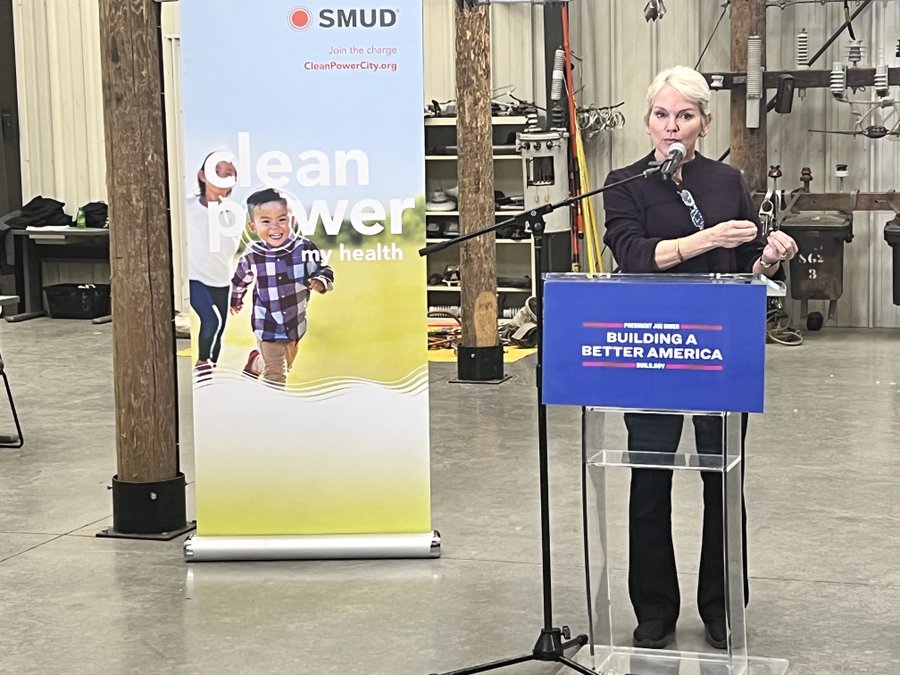
Each year, the training facility produces 500 skilled trade professionals through 12 apprenticeship programs, supporting regional workforce development opportunities.
Granholm also toured SMUD’s Hedge solar farm and battery energy storage facility, along with Lau and Rep. Bera.

The energy storage units are part of SMUD’s first utility-scale battery energy storage project — and a major element in its 2030 Zero Carbon Plan.
The six units, which weigh about 52,000 pounds each, are part of a SMUD Energy Strategy, Research & Development department project that also includes a myriad of other SMUD employees from throughout the organization.
Combined, the lithium-ion batteries will generate 4 megawatts of electricity and store 8 megawatt hours of energy, which is enough to power 800 homes for 2 hours. Inside each of the 6 units are 3,840 battery cells stacked and connected together.
They will soon be fully operation, but SMUD will continue to gather and research data. SMUD will learn about the feasibility of utility-scale battery storage and the practicality of reserve power at a large scale for future grid integration into SMUD’s Battery Energy Storage System, known as BESS.
According to SMUD, Granholm spoke about the criticality of achieving a clean energy future and the need for workers that can build the grid of the future, bringing good paying jobs.
She praised SMUD’s leadership for setting an example for the nation to follow in both setting such an ambitious goal to achieve zero carbon by 2030 and in training the utility workers of the future through the Power Academy, SMUD noted.
Granholm said that SMUD’s example “of how we can get” to clean, dispatchable baseload power “is what we want to take across the nation.”
She also said that “if we want to build out all of this clean electricity, we have to build out transmission for that clean electricity. That means we’re going to need the workers to be able to build that out.” The example being set by SMUD “is to create good jobs for people to be able to install the kinds of technologies” including the transmission grid.
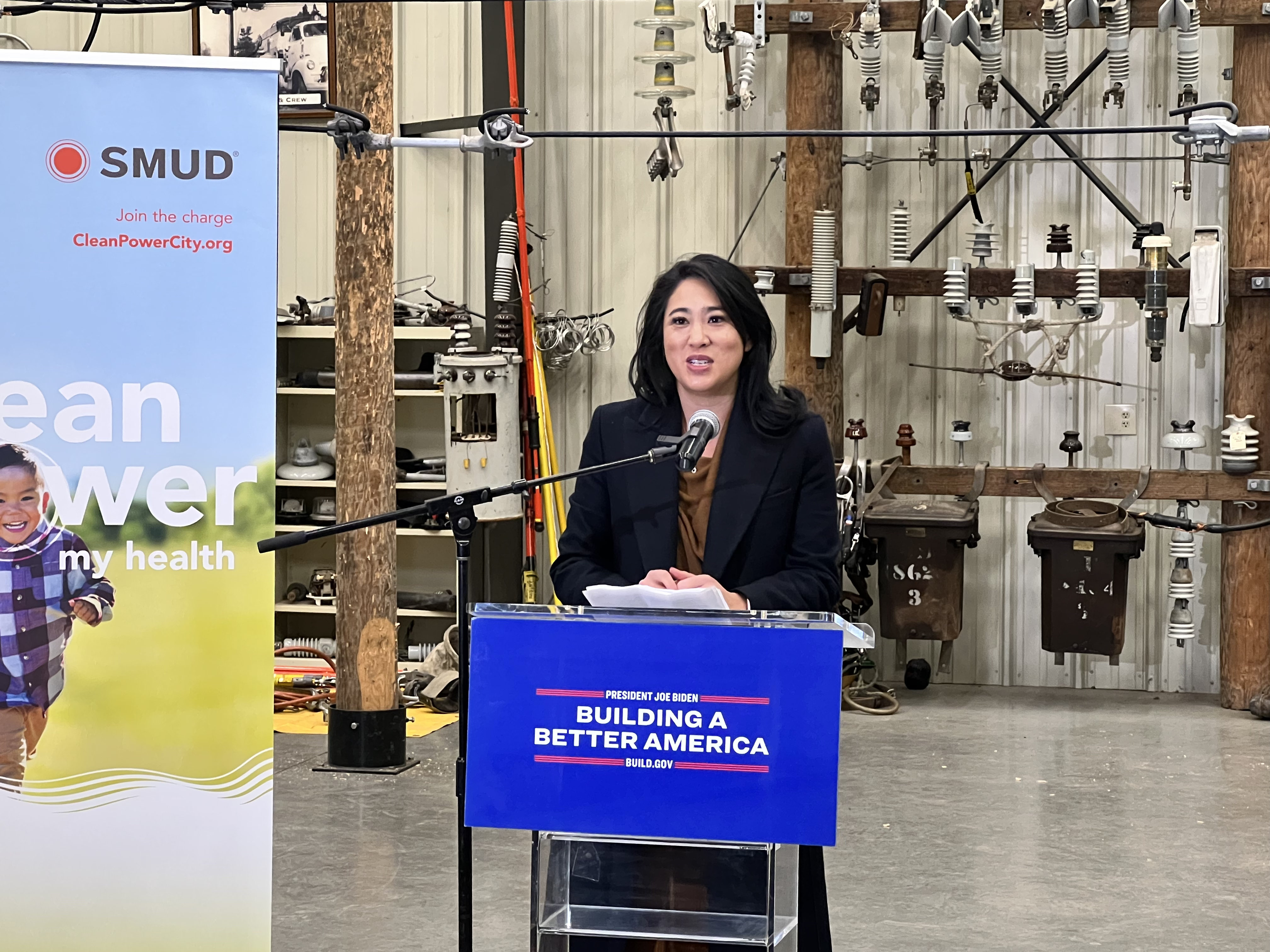
“It was an honor to give U.S. Energy Secretary Granholm and Congressman Bera a tour of SMUD’s Hedge solar farm and battery energy storage facility and the adjacent Sacramento Power Academy,” Lau said.
He thanked Secretary Granholm for recognizing SMUD’s clean energy leadership.
“We’re proud and excited to be pursuing the boldest clean energy goal of any large utility in the country — to remove 100% of all carbon emissions from our power supply by 2030. The Secretary and I agree, we have to act with urgency to address the impact of climate change and create a clean energy future for all. And to get there, we’ll need skilled utility workers in good-paying jobs,” Lau said.
“That’s why inclusive workforce development is a key part of our Zero Carbon Plan. Sacramento’s Power Academy is training people to build and maintain the grid our clean energy future needs and will create good-paying jobs,” he said.
Lau discussed SMUD’s zero carbon plan in an episode of the American Public Power Association’s Public Power Now podcast earlier this year.
Kevin Frizzell To Retire As General Manager of Owensboro Municipal Utilities
December 19, 2021
by Paul Ciampoli
APPA News Director
December 19, 2021
At an Owensboro Utility Commission meeting on Dec. 16, Owensboro Municipal Utilities (OMU) General Manager Kevin Frizzell advised the Commission that he intends to retire effective Aug. 1, 2022.
Frizzell told the Commission he was making the announcement now so to provide ample time for the selection of a new General Manager and to ensure a smooth transition for the Kentucky utility.
Frizzell, who will have 32 years of service upon his retirement has served as General Manager for the past four years.
Frizzell was named interim General Manager on Feb. 12, 2018 and General Manager on December 20, 2018.
Frizzell, formerly OMU’s Director of Production, joined OMU in 1990 at the company’s coal-fired generating plant, the Elmer Smith Station, as the Technical Services Manager.
He was named Director of Power Production in 2008, charged with the management of OMU’s largest asset, the Elmer Smith Station. In 2013, OMU combined power production and water treatment into one production department and operation of OMU’s two drinking water plants came under his area of responsibility.
Utility Commission Chairman JT Fulkerson said that OMU is ready to begin the search and selection process and expects to identify qualified candidates from outside and within OMU.
OMU is the largest municipal electric and water system in Kentucky with more than 26,000 electric, 24,000 water and 160 telecommunications customers.
New York Governor Unveils Framework For State To Achieve At Least 10 GW of Distributed Solar
December 19, 2021
by Paul Ciampoli
APPA News Director
December 19, 2021
New York Gov. Kathy Hochul on Dec. 17 unveiled a framework for the state to achieve at least 10 gigawatts (GW) of distributed solar by 2030.
The roadmap was submitted by the New York State Energy Research and Development Authority (NYSERDA) and the New York State Department of Public Service (DPS) to the New York Public Service Commission for public comment and approval.
The announcement supports the state’s Climate Leadership and Community Protection Act mandate to generate 70 percent of the state’s electricity from renewables by 2030.
The roadmap proposes a comprehensive strategy to expand the state’s NY-Sun initiative into one of the largest and most inclusive solar programs of its kind in the nation.
NYSERDA and DPS evaluated multiple strategies to deploy 10 GW or more of distributed solar — projects that are under five megawatts (MW) in size, including rooftop installations and community solar projects — by 2030 and determined that extending the NY-Sun initiative provides the most efficient, familiar, and cost-effective path forward.
The roadmap proposes at least 1,600 MW of new solar capacity to benefit disadvantaged communities and low-to-moderate income New Yorkers, with an estimated $600 million in investments serving these communities.
It also proposes at least 560 MW to be advanced through the Long Island Power Authority and at least 450 MW to be built in the Con Edison electric service area.
The roadmap is available for public comment on the DPS website and subsequent decision-making in 2022.
Since the NY-Sun initiative was launched, NYSERDA has worked closely with local governments, agricultural communities, other state agencies, and a wide range of stakeholders to ensure that projects are developed and sited in a manner that fully considers land use and are advanced in close collaboration with local stakeholders and agricultural communities.
NYSERDA will extend its ongoing technical assistance for all municipalities in the state to assist localities in aligning solar development with local priorities.
California Community Choice Aggregator Earns “A” Credit Rating From S&P
December 19, 2021
by Paul Ciampoli
APPA News Director
December 19, 2021
California community choice aggregator (CCA) East Bay Community Energy (EBCE) has been given an “A” issuer credit rating from S&P Global Ratings.
S&P cited EBCE’s solid financial performance. At fiscal year-end 2021, EBCE had no debt outstanding.
The rating agency also said that EBCE’s environmental risk exposure is low, based on its predominantly carbon-free resource portfolio.
The outlook is stable.
“The credit rating is important for two reasons,” said EBCE CEO Nick Chaset. “For EBCE’s counterparties, such as renewable energy project developers, it shows that we’re on solid financial footing and are low risk, which can help us secure the best terms in our contracts. This translates to better access and service of low-cost, long-term renewable energy for EBCE customers in the decades to come.”
EBCE operates a community choice energy program for Alameda County, Calif., and fourteen incorporated cities, serving more than 1.7 million residential and commercial customers.
EBCE initiated service in June 2018 and expanded to the cities of Pleasanton, Newark, and Tracy in San Joaquin County in April 2021.
The American Public Power Association has initiated a new category of membership for community choice aggregation programs.
Biden Plan Supports nationwide EV Charging, Creates New Joint DOE-DOT Office
December 17, 2021
by Peter Maloney
APPA News
December 17, 2021
President Joe Biden recently released a plan that lays out how his administration intends to support the adoption of electric vehicles (EVs) under the recently passed $1 trillion Bipartisan Infrastructure Law.
Under the EV Charging Action plan, the Department of Energy (DOE) and the Department of Transportation (DOT) will establish a Joint Office of Energy and Transportation to support the deployment of $7.5 billion from the Bipartisan Infrastructure Law to build out a national electric vehicle charging network. The new office will provide technical assistant to states and help in developing plans for charging station networks.
The Bipartisan Infrastructure Law includes $5 billion in state funding, including a 10 percent annual set-aside to provide grants to states to help fill gaps in the charging network, and $2.5 billion for a competitive grant to help ensure that charger deployments meet administration priorities such as supporting rural charging, improving local air quality, and increasing electric vehicle charging access in disadvantaged communities.
In an August executive order, Biden set a target of having 50 percent of all new vehicles sold in 2030 be zero-emissions vehicles, which includes battery electric, plug-in hybrid electric, and fuel cell electric vehicles.
Biden’s EV Charging Action plan also calls for a series of initial stakeholder meetings on topics including partnerships with state and local government, domestic manufacturing, equity and environmental justice, and maximizing environmental benefits.
Earlier this month, the DOT’s Federal Highway Administration issued a request for information for two new programs aimed at supporting the spread of electric vehicles.
DOT and DOE will also launch a new Advisory Committee on Electric Vehicles and is targeting to appoint members to this committee by the end of the first quarter of 2022.
The American Public Power Association plans to respond to the RFI.
The Biden administration has also charged the DOT to publish, no later than Feb. 11, guidance for states and cities to strategically deploy electric vehicle charging stations to build out a national network along the nation’s highway system. And by May 13, the DOT is charged with publishing standards for electric vehicle chargers in the national network.
The administration’s plan also seeks to maximize the use of American manufacturing and jobs in the charging station build-out. In November, the DOT and DOE released a request for information from domestic manufacturers to identify EV chargers and other charging related components that meet Buy America requirements.
The DOT also announced an upcoming solicitation for the sixth round of Alternative Fuel Corridors designations.
EV Battery and Materials Funding
Another component of the administration’s EV Charging Action plan is to increase domestic manufacturing of electric vehicle batteries and components and advance environmentally responsible domestic sourcing and recycling of critical minerals.
In support of that effort, the Federal Consortium for Advanced Batteries released the National Blueprint for Lithium Batteries that aims to develop a domestic lithium battery supply chain.
Also, the DOE’s Loan Programs Office published new guidance and a fact sheet for the approximately $17 billion in loan authority in the Advanced Technology Vehicles Manufacturing Loan Program (ATVM) to support the domestic battery supply chain.
And the DOE’s Federal Energy Management Program has launched an effort to support deployment of energy storage projects by federal agencies, including a federal government-wide energy storage review to evaluate the opportunities for deploying battery storage at federal sites and a call for projects from federal sites interested in deploying energy storage projects.
The Bipartisan Infrastructure Law also includes more than $7 billion in funding to accelerate innovations and facilities across the battery supply chain from battery materials refining, processing and manufacturing to battery manufacturing.
Funding for those efforts includes $3 billion in competitive grants for battery minerals and refined materials and another $3 billion for competitive grants aimed at building, retooling, or expanding manufacturing of batteries and battery components, such as cathodes, anodes, and electrolytes, and to establish recycling facilities in the United States.
Funding also earmarks $60 million for research, development, and demonstration recycling projects, including $15 million for programs with retailers. Another $50 million is earmarked for state and local governments to increase the collection of spent batteries for reuse, recycling or proper disposal, and $200 million has been identified for electric vehicle battery recycling and second-life applications programs.
And an additional $750 million in funding is being put toward the Advanced Energy Manufacturing and Recycling Grant Program that aims to re-equip, expand or establish an industrial or manufacturing facility to reduce greenhouse gas emissions of that facility substantially below current best practices.
OUC Board Of Commissioners Approves Retirement Of Coal-Fired Unit
December 17, 2021
by APPA News
December 17, 2021
The Board of Commissioners for Florida public power utility Orlando Utilities Commission (OUC) on Dec. 14 formally approved the retirement of Stanton Energy Center’s (SEC) Unit 1 by no later than 2025 and the conversion of SEC’s Unit 2 to natural gas by no later than 2027.
Previously, Unit 1, OUC’s oldest coal-fired power plant, had been slated for conversion to natural gas.
The official adoption by the Board of Commissioners “is further proof of our commitment to meet our goal of Net Zero CO2 emissions by 2050 with interim targets of 50% by 2030 and 75% in 2040,” said Clint Bullock, OUC General Manager and CEO, in a statement. “The retirement of Unit 1 also is a significant milestone toward fully eliminating coal-fired generation no later than 2027. As we continue our transition to clean energy, operational flexibility is key to maintaining the reliability, resiliency and affordability our customers expect.”
The retirement of Unit 1 became possible with the recent purchase of the Osceola Generating Station, a 510-megawatt (MW) simple-cycle natural gas-fired power plant located in Harmony in Osceola County, Fla.
OUC said that as it aggressively increases its reliance on solar energy, OSG will be used to mitigate solar production fluctuations to maintain system-wide electric reliability. Currently, the facility is undergoing renovations and testing and will be fully operational by no later than 2025.
In December 2020, OUC leadership recommended significantly reducing the use of coal by no later than 2025 and eliminating it entirely by no later than 2027. The announcement was the result of the utility’s Electric Integrated Resource Plan.
OUC said that it is on its way to meeting its strategic objectives, which include continued investments in renewable energy and energy efficiency and driving the adoption of vehicle electrification and energy storage.
Lansing Board of Water & Light Restores Power After Train Incident, High Winds
December 17, 2021
by Paul Ciampoli
APPA News Director
December 17, 2021
Michigan public power utility Lansing Board of Water & Light (BWL) recently completed power restoration efforts after an incident with a train and high winds knocked out electric service to customers of BWL.
On the morning of Dec. 11, a train crossing a road near Michigan State University’s campus entangled with a wire, causing approximately 30 BWL power poles to break and causing more than 4,000 customers to lose power.

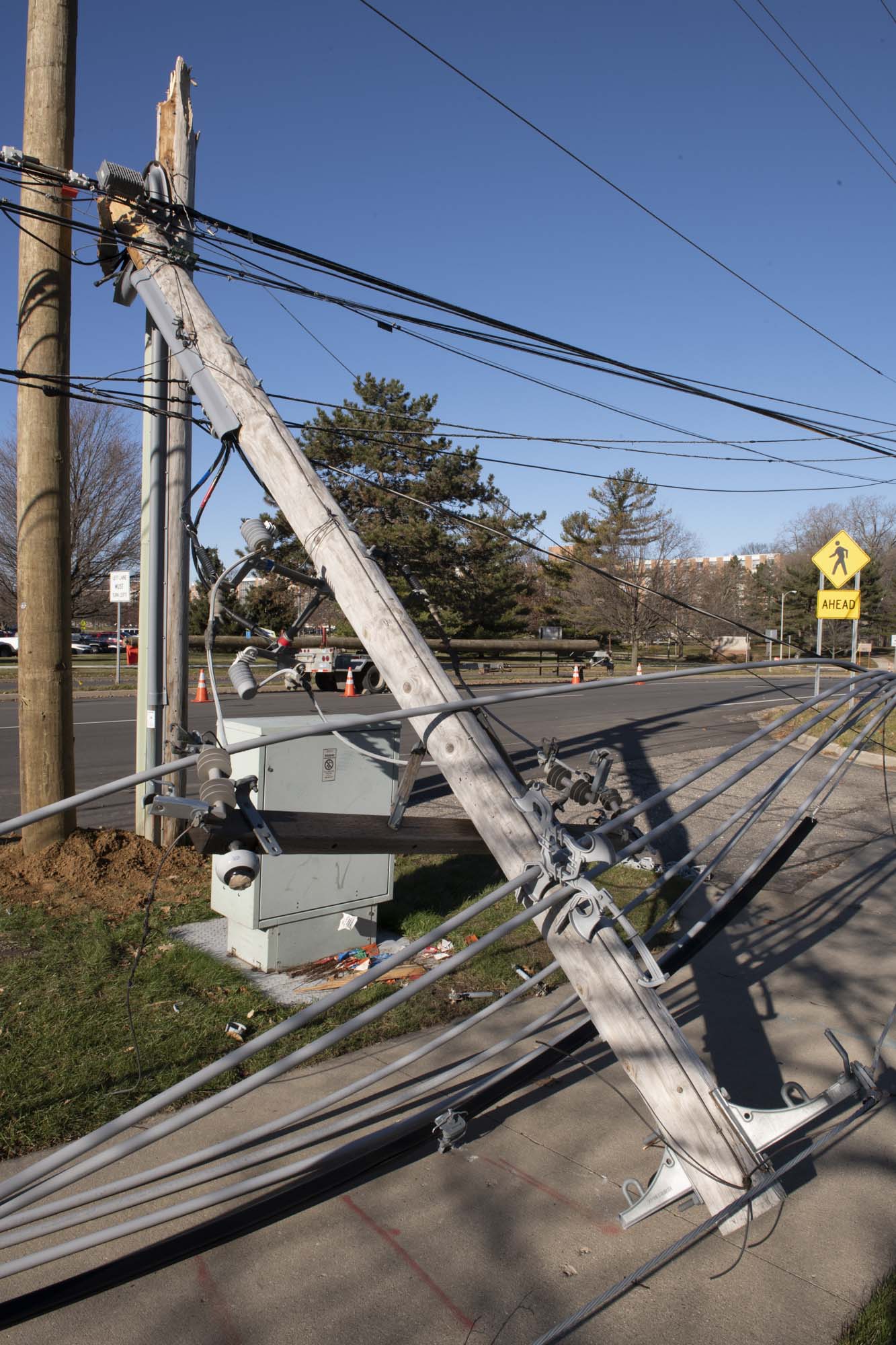
For a video that includes footage of the train incident, restoration efforts and additional details on BWL’s response, click here.
At the same time, BWL was responding to other outages in its service territory following high winds.
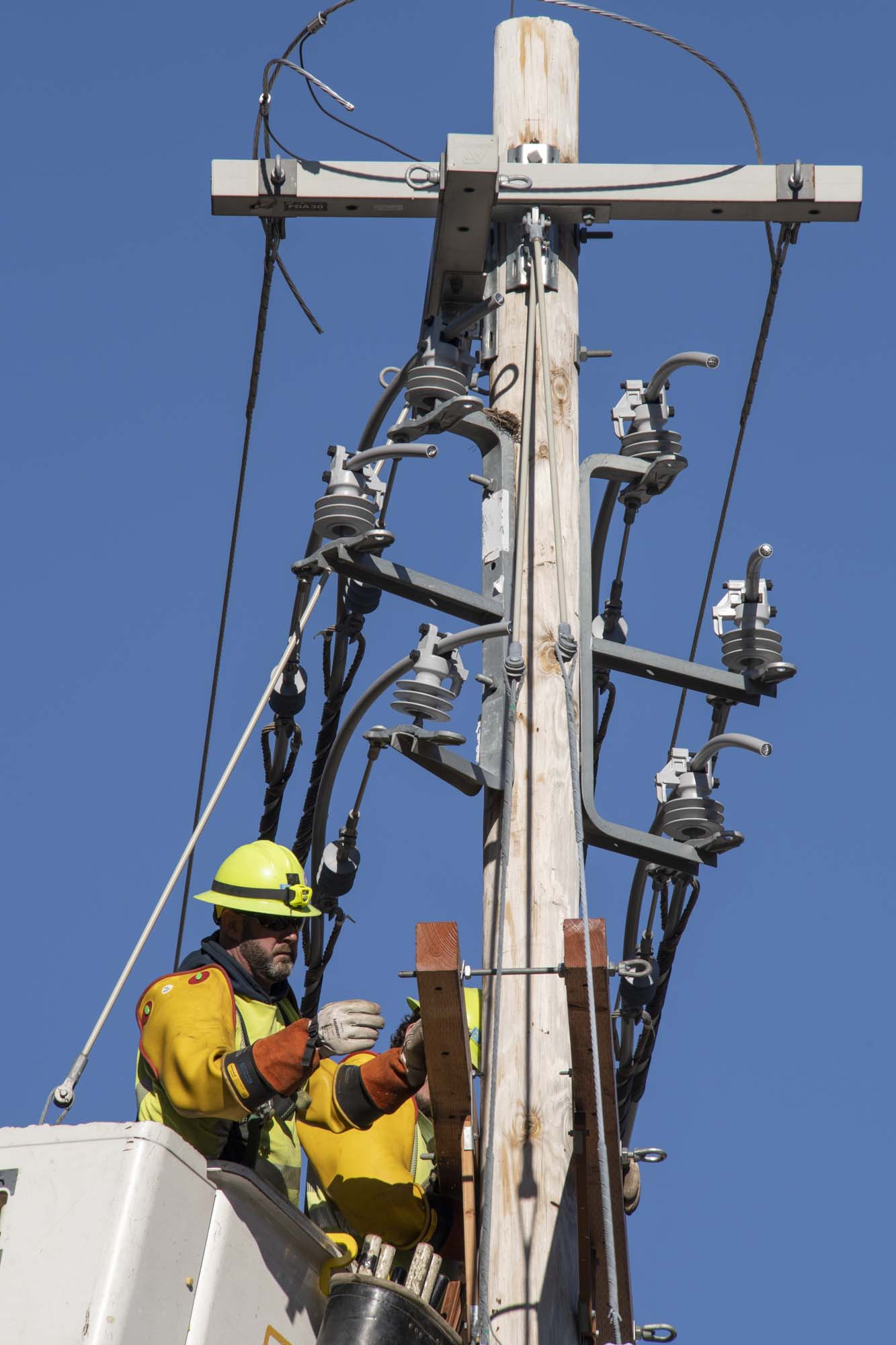
The utility called in mutual aid crews to help restore power to customers quickly. Crews from the following public power utilities and communities helped BWL:
- City of Sturgis, Mich.
- Board of Light and Power Grand Haven, Mich.
- City of Niles, Mich.
- Lowell Light and Power, Mich.
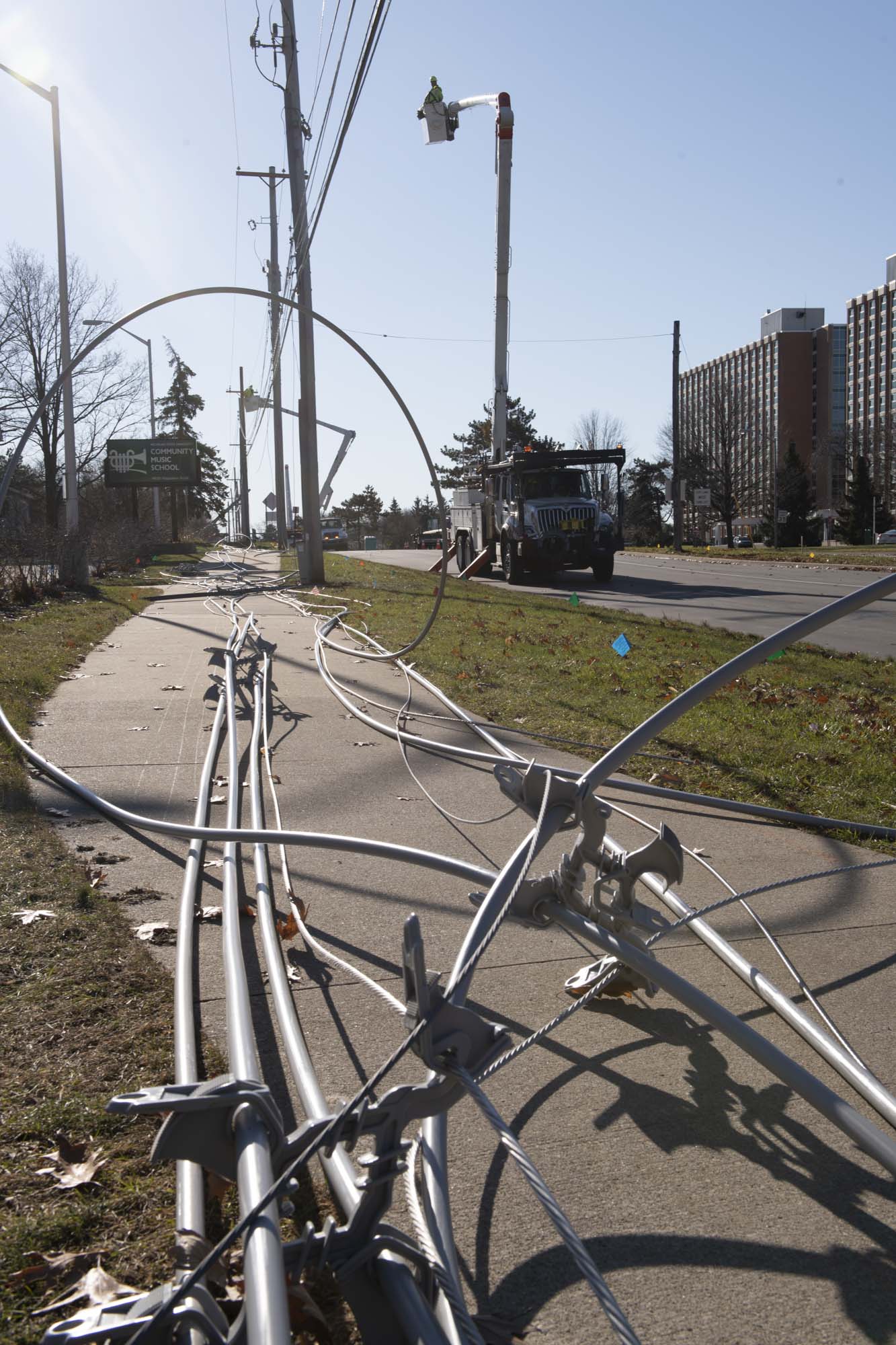
LBW also received assistance from Asplundh, a utility contractor.
Platte River Power Authority Seeks Solar Supply, Encourages Storage Proposals
December 16, 2021
by Paul Ciampoli
APPA News Director
December 16, 2021
Colorado-based Platte River Power Authority recently issued a request for proposals (RFP) for up to 250 megawatts (MW) of new photovoltaic solar generating capacity that could begin producing energy by 2025.
Platte River encourages any proposed project to include a battery energy storage component. The RFP also enables bidders to propose installations that could interconnect anywhere on Platte River’s transmission system, including the distribution systems in the owner communities of Estes Park, Fort Collins, Longmont and Loveland.
“As we continue to work toward achieving the resource diversification policy goal, our ongoing challenge will be to maintain Platte River’s core pillars to safely provide reliable, environmentally responsible and financially sustainable energy and services during a time of rapidly improving technology and resource costs,” said Jason Frisbie, general manager and CEO of Platte River.
The resource diversification policy was adopted by Platte River’s Board of Directors in 2018. The policy calls for leadership to pursue a 100% noncarbon energy mix by 2030, provided the organization’s core pillars are upheld.
In 2020, Platte River maintained 100% transmission system reliability and provided power to its owner communities at the lowest wholesale rates in Colorado.
With an additional 250 MW of solar generating capacity, Platte River estimates its overall annual energy production will be approximately 54% noncarbon.
Developers are encouraged to consider proposing projects that could interconnect with Platte River’s transmission system, including regions in northwest Colorado and the northern Front Range.
Particular consideration may also be granted to smaller projects (25 megawatts or less) that could connect to the distribution systems of one or all of Platte River’s owner communities.
Within each project proposed, developers are encouraged to include a battery energy storage component capable of providing 100% of the project’s nameplate capacity for at least four hours and be dispatchable by Platte River when needed.
Proposals are due Feb. 18, 2022, after which Platte River will develop a short list of potential projects that add up to approximately 250 megawatts and sign power purchase agreements later in the year.
The RFP is available here.
Santee Cooper Board Approves Hiring Of Jimmy Staton As Next President And CEO
December 16, 2021
by Paul Ciampoli
APPA News Director
December 16, 2021
Santee Cooper’s Board of Directors on Dec. 16 approved the hiring of Jimmy Staton, a utility executive with extensive experience in electric and natural gas operations in the Midwestern United States, to become Santee Cooper’s next president and CEO.
He will start in his new role on March 1.
Santee Cooper is the state-owned public power utility in South Carolina based in Moncks Corner.
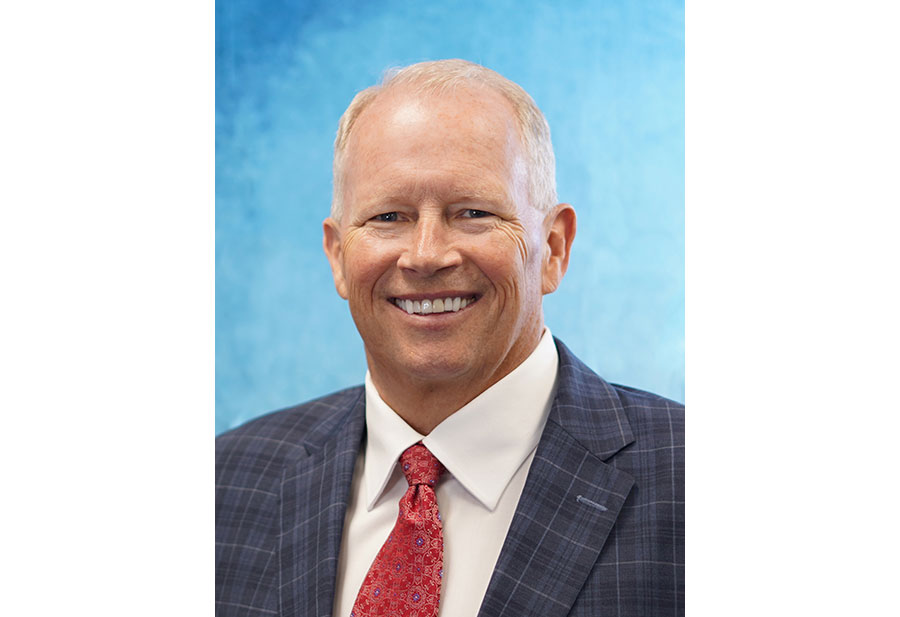
The board also approved naming Deputy CEO Charlie Duckworth as Acting President and CEO beginning Jan. 10, 2022 through Feb. 28, 2022 and extending his current contract as Deputy CEO through July 9, 2022.
Current President and CEO Mark Bonsall will retire on Jan. 9, 2022 and remain available on a consulting basis through the initial transition, until early April.
Staton is currently president and CEO of Southern Star Corp., a transporter of natural gas in the Midwest.
He also served as executive vice president for NiSource, one of the largest fully regulated utility companies in the U.S. with approximately 3.5 million natural gas customers and 500,000 electric customers across seven states; as senior vice president for Dominion Resources Inc., and as president of asset operations for Consolidated Natural Gas (CNG) Corp. prior to its acquisition in 2000 by Dominion Resources.
Among his career accomplishments to date, Staton led each of NiSource’s 3 business units — a gas distribution network serving 2.7 million customers in 6 states, a combination electric and gas utility serving over 850,000 customers in Indiana and an interstate pipeline and storage company delivering natural gas to Midwest, Northeast and Mid-Atlantic markets, including building a gathering and processing business with over $1 billion in assets.
NiSource Inc. operates the Columbia Gas and NIPSCO brands.
He also led Dominion’s Electric Distribution operations, serving 2.2 million customers in Virginia and North Carolina, after its acquisition of CNG.
Over time, his responsibilities grew to include Dominion’s electric transmission system and gas distribution business, serving 2 million customers in the Midwest.
